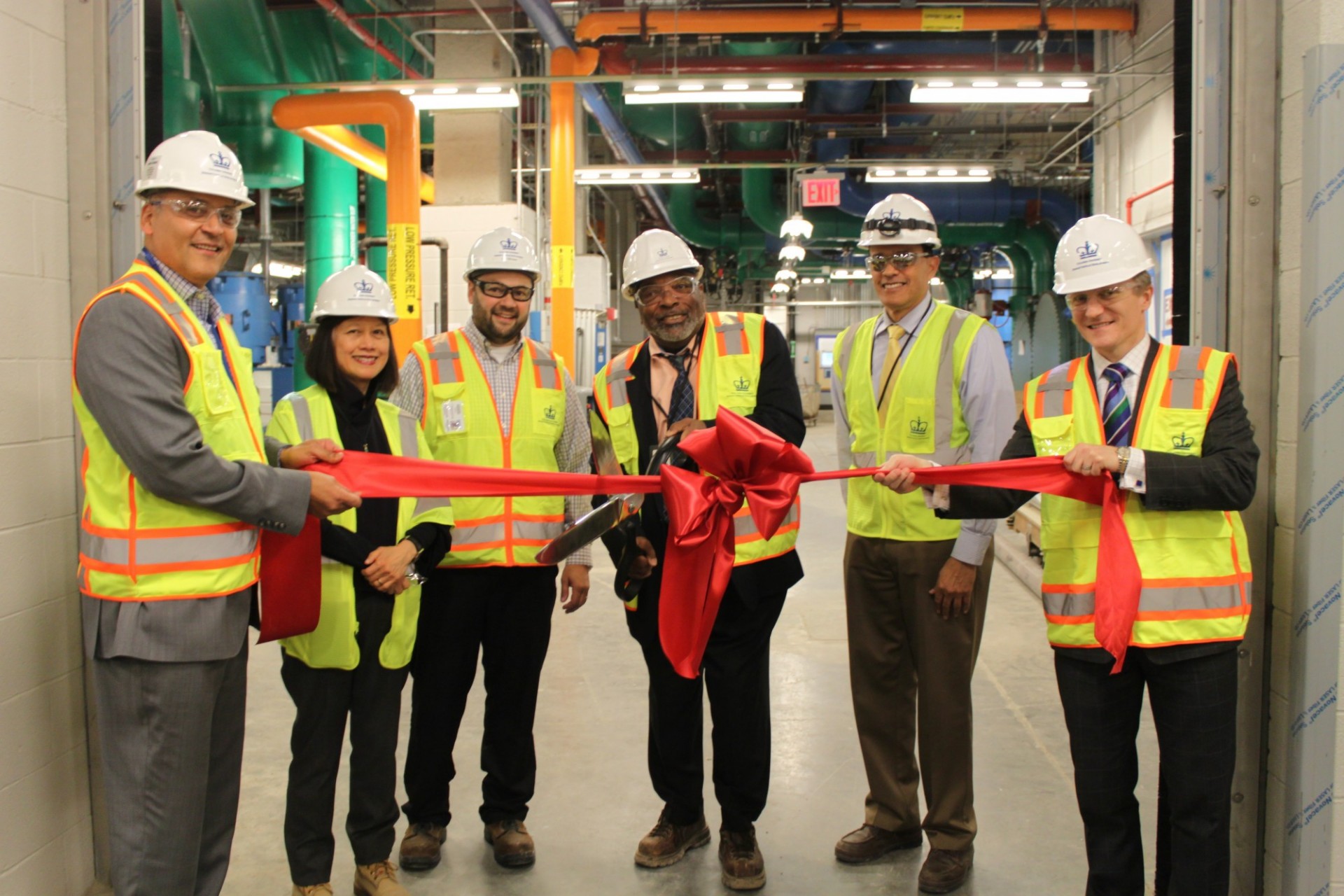Columbia University Receives First Temporary Certificate of Occupancy at Manhattanville Campus
Central Energy Plant will provide efficient energy to Phase 1 buildings of new campus

As construction for the Jerome L. Greene Science Center and Lenfest Center for the Arts gets closer to completion, Columbia University received its first temporary certificate of occupancy (TCO) at the Manhattanville campus. The first TCO was awarded not for a new building, but for something fundamental to the operation of the entire campus – the Central Energy Plant (CEP).
In many ways the Central Energy Plant provides the new campus its vital organs. As its name implies, the CEP is a single, central location that provides chilled water, high pressure steam and normal electric power across the Manhattanville campus.
Located below the Jerome L. Greene Science Center and the Lenfest Center for the Arts, the CEP consists of two floors below grade and currently occupies 57,000 gross square feet. Designed to serve all buildings in Phase 1 of the Manhattanville campus, the CEP will expand to a total of 75,000 gross square feet when more buildings are constructed during the project’s second phase. The CEP includes a refrigeration plant, high-efficiency dual-fuel-fired (oil and natural gas) boiler plant, normal electric power service from Con Edison, a robust emergency/standby diesel generator plant, and associated support and advanced control systems.
“In the ways that a heart gives life to a person, the Central Energy Plant is the heart of the Manhattanville campus,” said Marcelo Velez, vice president of the Manhattanville Development Group. “We’re pausing to celebrate the TCO milestone, not only because it is significant, but also because the CEP supplies fundamental services to the buildings on campus. Getting to this point took a lot of hard work from a lot of people – from architects and engineers to construction workers to our own staff – and we thank them all for making it happen.”
“The Central Energy Plant contributes to the many positive environmental accolades that the Manhattanville campus has received,” said Wil Elmes, associate vice president for engineering and technical services for the Manhattanville Development Group. “A centralized plant is a more efficient way to deliver services, significantly reducing fuel consumption and stack emissions, while also avoiding the redundancy of having boilers and stacks at each building for heating. In addition, the Central Energy Plant is extremely efficient compared to most existing buildings in the area, producing 27 to 30 percent fewer emissions than the industry standard based on a recent analysis.”
Elements of the Central Energy Plant include:
- A central chilled water plant with electric motor and steam turbine-driven, centrifugal refrigeration machines; variable speed pumps for each chiller; refrigeration monitoring system; automatic controls and more
- A high pressure steam plant featuring high efficiency modulating low NOx burners
- Natural gas and fuel oil systems, such that the plant can switch from natural gas to No. 2 oil when requested by our local utility during periods of peak city-wide demand for natural gas to help ensure that the city’s gas storage supplies are kept at a safe level
- Emergency generators, located on the roof of the Studebaker Building, which would automatically activate during a loss of normal electric power from Con Edison; all essential systems and equipment, including life safety systems, are backed up by the emergency generator plant
Earlier this spring, members of the Manhattanville Development Group and Columbia University Facilities and Operations joined representatives from the design and construction teams to recognize this important milestone.
“The amount of planning required to build a new campus cannot be overstated,” said Frank Martino, vice president of operations at Columbia University Facilities and Operations. “It’s laudatory that everyone involved in the process recognized the best practice in following the centralized energy system in place at the Morningside campus as the best way to build a strong foundation to support the buildings in Manhattanville. We are proud to have worked with the design, engineering and construction teams to build and now operate the state-of-the-art Central Energy Plant.”